After A Year With North's Smart Glasses, Here's Why I'm All-In On Focals 2.0
- Smart glasses feel like the future of wearables
- Focals come close to looking like regular glasses
- North's feature updates have been impressive & frequent
- Multiple ways to interact add to everyday usability
- They're light, but the weight balance could be better
- Display quality is a little fuzzy
- Charging case is big & bulky
- Life at the cutting-edge is expensive
For nearly the past year, on and off, the future has been balanced on my face. Smart glasses have long been the lodestar of wearables, and North's Focals promised a taste of that before the tech heavyweights had shown their hand. It hasn't been an easy path here, though, shaped by sci-fi movies and soured by projects like Google Glass along the way.
I've been alternating between my regular glasses and the first-generation Focals since I took delivery of them a few months short of a year ago. That came after North opened up its testing and fitting process more broadly, using a mobile sizing system the company could take around the country, but before it turned to using an app to make the whole thing even easier. Part of the complexity was getting the prescription lenses right, too.
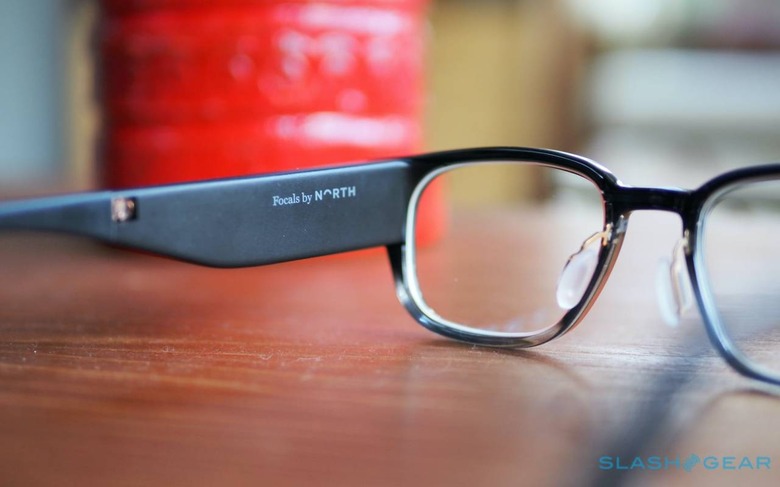
Your face is a tough nut for smart glasses to crack
Like a lot of would-be smart glasses wearers, I'm already primed for the concept because I wear regular glasses every day. I'm short sighted (as in, I can't really read these words I'm typing without my specs on) and so North's eagerness to make prescription versions of Focals felt like a huge deal. I've always believed – and still do – that existing glasses-wearers are the obvious early audience for tech like this.
Getting custom lenses made, and ones which work with North's embedded display system, took a while, though. And I have to admit, when I first put Focals on, I wasn't entirely convinced by what I was seeing.
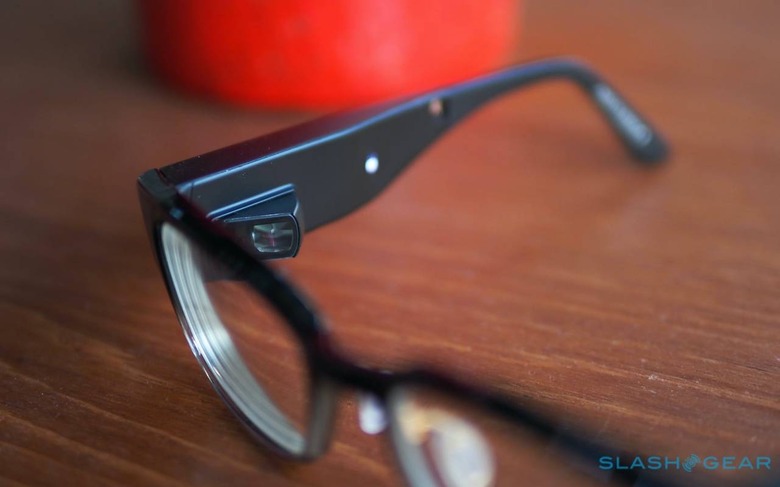
Showing what a Focals' wearer is seeing is tough, especially when the glasses have been made especially for your particular vision. North's app has a "virtual view" you can load up on your phone, but since the first-gen Focals don't have a camera it relies on the phone's camera for the scene ahead. Then it superimposes the head-up display graphics you're seeing in your right eye on top of that.
Or, at least, it superimposes the graphics the software generates. What I was seeing through Focals myself was always a little more fuzzy around the edges; a touch more blurred. You can tweak the alignment, both of the position of the display in your line of sight and of how the colors overlap and blend, but even after multiple runs through the setup process it always looked a bit... crunchy.
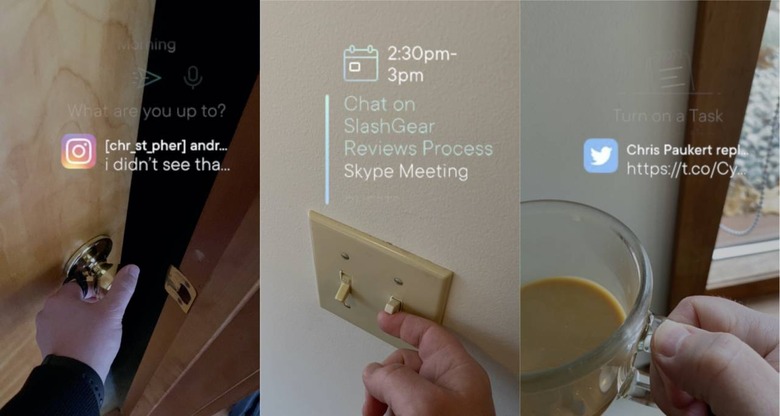
Adding to that was the fact that getting Focals to stay in place – and do so comfortably – is another issue. North's glasses weigh 68.3 grams – it can vary depending on the size, style, and lenses – and at first glance that doesn't seem like much at all. A plastic-bodied Pixel 3a, for instance, is 147 grams. A pair of Beats Solo Pro headphones come in at 267 grams.
Problem is not everything that might be on, or around, your face applies its weight in the same way. My regular glasses, for example, are 22.7 grams, a third of the Focals. That difference adds up the longer you wear them, and it's exacerbated by how the mass is balanced.
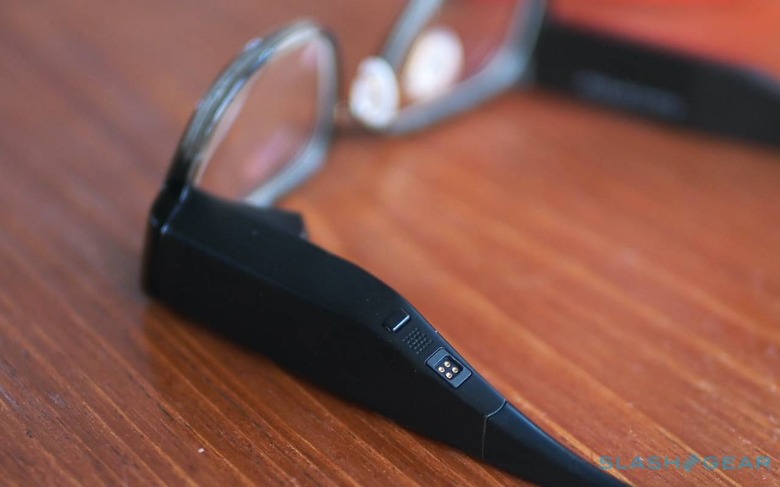
A lot of it is placed on the bridge of your nose, because Focals' heaviest parts are biased to the front. That makes it more noticeable, yes, but I found it also has the side-effect of the glasses gradually shifting down on my face. That slowly moves the display out of its perfect positioning in my eyeline. Similarly, every time I nudged them because of the comfort issue, I usually pushed them slightly out of that best location for optimal screen visibility.
Discretion isn't guaranteed
One aspect of Focals works incredibly well: how discreet the display is. Maybe early on in smartwatches you could get away with checking your wrist and not having people instantly understand you were reading a notification, but those halcyon days are far behind us. At this point, no matter how surreptitiously I glance down at my Apple Watch, my partner knows I'm only half paying attention.
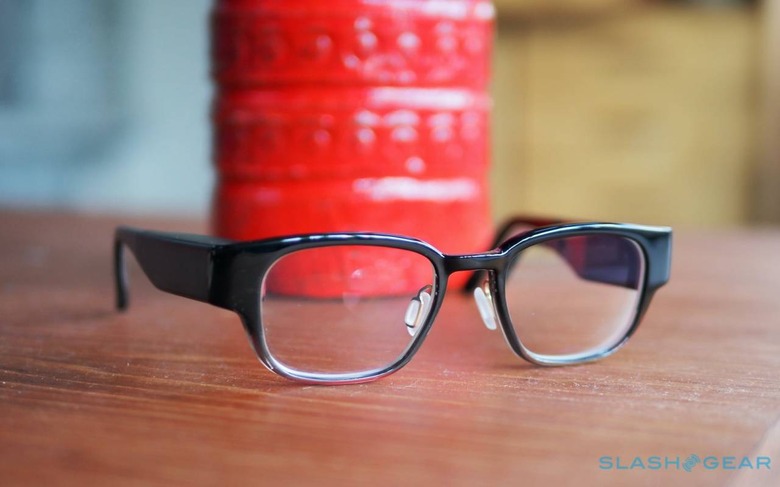
We'll probably reach a similar point with smart glasses too, but for the moment North's display is a lot more clandestine in use. There's a little shimmer where the projection system is designed to hit the plastic lens, if you happen to be looking at the right angle and at the right time, but mostly it's all very low-key. As long as I stifled whatever chuckles the funny replies to tweets might have prompted, I could generally get away without my divided attention being discovered.
More troublesome to hide is the fact that these aren't ordinary glasses, period. North deserves some serious kudos for how compact it managed to slim the first-generation Focals down, certainly. I've been trying out prototype smart glasses for several years now, from a variety of companies, and shrinking everything into a form-factor that comes even close to regular eyewear is incredibly tough. That Focals do that is an achievement worthy of high praise.
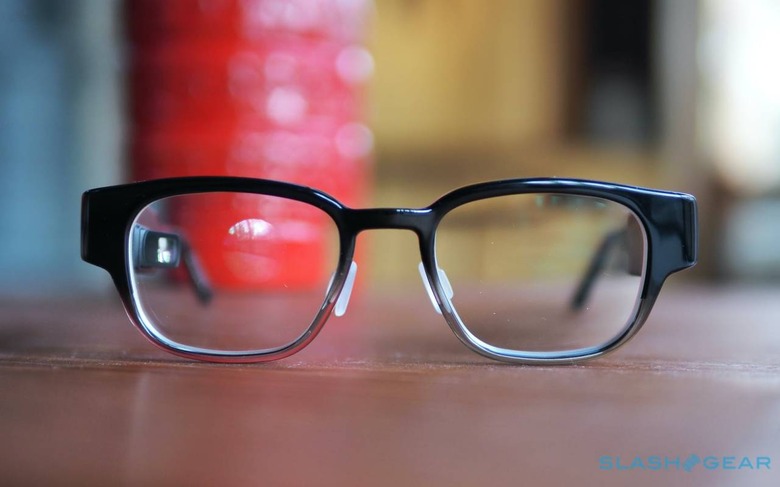
They're not perfect, though. The primary bulk is around the arms, where they meet the lenses. That's where the batteries, the processor and other components, the microphones, and the projector system are all contained, and as a result they're much chunkier than the arms of a standard pair of regular glasses.
Look at Focals dead-on from the side and you won't really see it; from straight ahead, the bulging arms are a little more obvious. But at any sort of angle, assuming you've got short hair that doesn't cover it all up, people are going to clock that these aren't your typical glasses. Expect questions, though that's probably not out of line for any early-adopter with a first generation product.
When the stars align, Focals are near-sublime
If I sound overly critical of Focals, you should know that it comes from a place of love. I've wanted the smart glasses form-factor to exist as a consumer product – something you can go out and buy, rather than just as a sci-fi movie prop or a weird proof-of-concept – for decades. I think augmented reality is legitimately one of the most exciting segments in the industry, and I do believe that things like smart glasses are the form-factor of the (near) future.
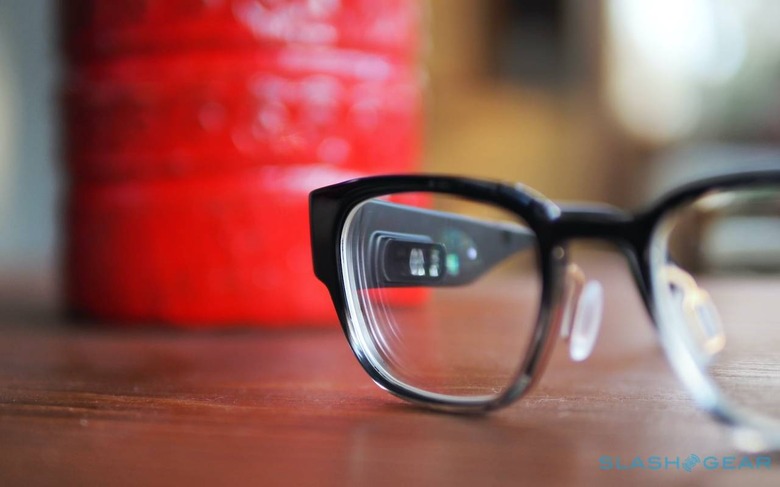
Focals have given me addicting glimpses of how that future will work. Having a notification float into view, and responding to it with a quick voice command, can be much quicker than pulling out my phone and doing it the traditional way.
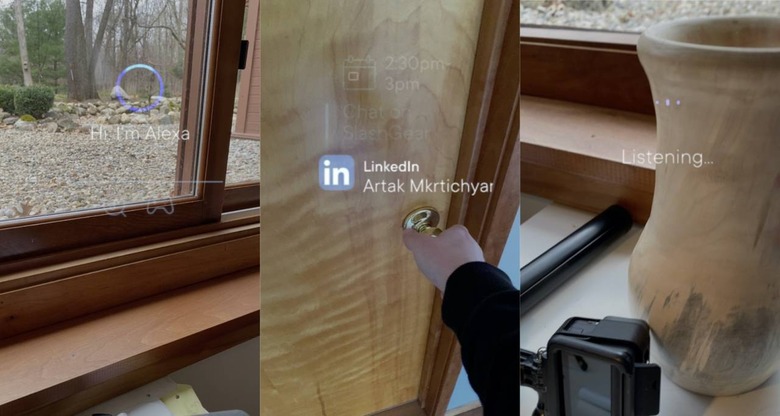
I'd worried a little that having my digital world suspended in front of my face might make it hard to pull myself away from it. The reality is, though, that I'm far less likely to go off on an internet tangent through Focals than I am on my phone. I am, it seems, singularly incapable of seeing a notification on my lock screen, opening it on my phone, reacting to it, and then putting the phone down again. Far more likely is that I deal with the notification, then get distracted with my email, or Twitter, or Instagram, or... well, you get the picture.
Focals may have a range of functionality, but it feels far more task-biased than your iPhone or Galaxy does. If I check the weather forecast on Focals, I'm not going to then segue into my inbox. You can see your Twitter mentions – and Like, Retweet, or Reply – but this really isn't the form-factor to keep up with a fast-moving timeline. North's app sensibly allows you to choose which of your phone notifications make it through to your eyeline, too, and automatically mutes them when it senses you're driving.
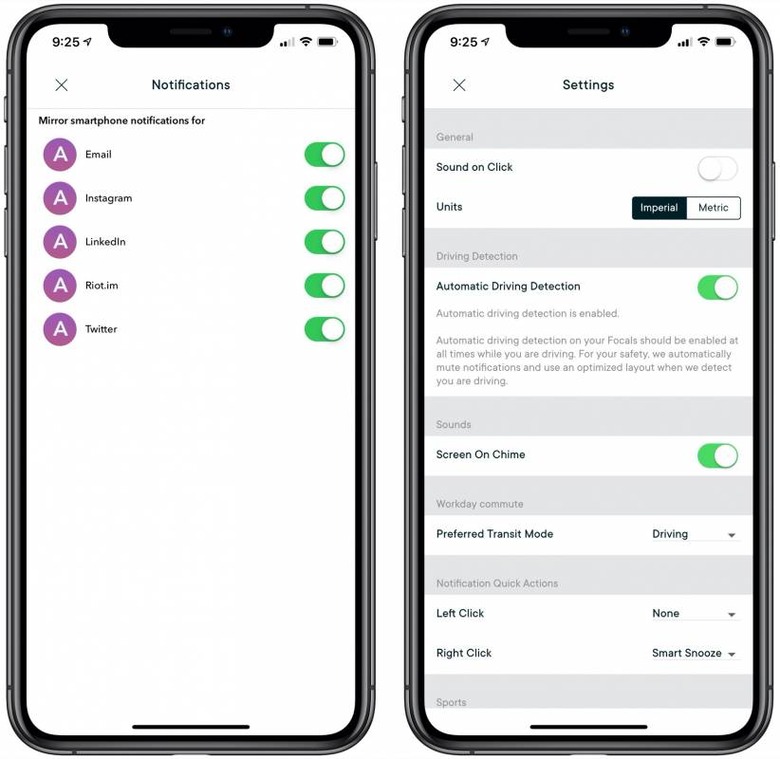
Just as was the case with smartwatches, I think we're still in the early, discovery days of figuring out how smart glasses fit into our overall collection of personal devices. My Apple Watch hasn't replaced my iPhone, but it has augmented it; my smart speaker hasn't supplanted apps, but it has proved to be a shortcut to their key functionality.
North offers a tantalizing glimpse of how digital eyewear may fit into that too. One thing I've particularly liked was the plurality of ways to control Focals. Unlike Google Glass' side-mounted trackpad – which always made me feel like I was cosplaying Star Trek: TNG's Geordi La Forge – you navigate primarily using a wireless plastic ring with a tiny joystick on top, which North calls the Loop. I'm not a ring-wearer normally, and so having the Loop on my finger felt a bit strange initially, but it turned out to be a great, unobtrusive way to move through the Focals interface.
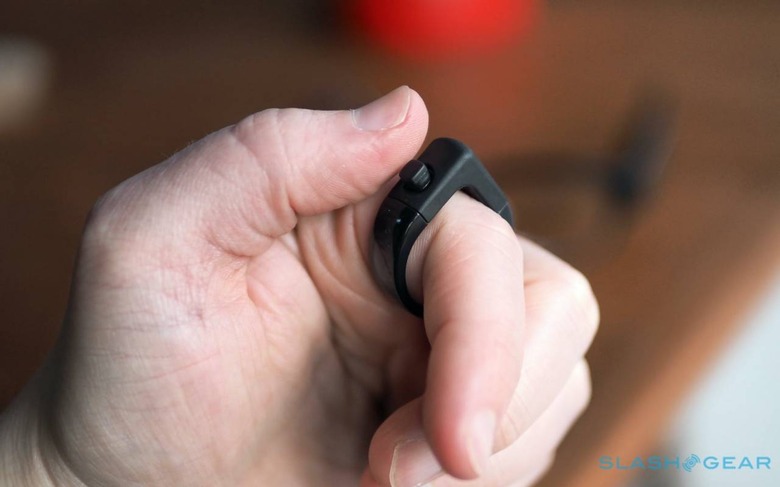
Alternatively, there's voice control. You can use voice-to-text to respond to messages, for example, or talk to Alexa just as you would with a smart speaker. I'm always a little self-conscious to use voice command systems out in public, but Focals' microphone was at least sensitive enough that it could usually pick up my relatively quiet murmuring rather than demanding I bellow instructions like a marching band leader.
Even battery life was a pleasant surprise. The 700 mAh battery in Focals didn't give me a huge amount of confidence about all-day use, but honestly it was usually my face that was the limiting factor. You charge the smart glasses – and the Loop – in the included case, which is reassuringly sturdy but also comically large.
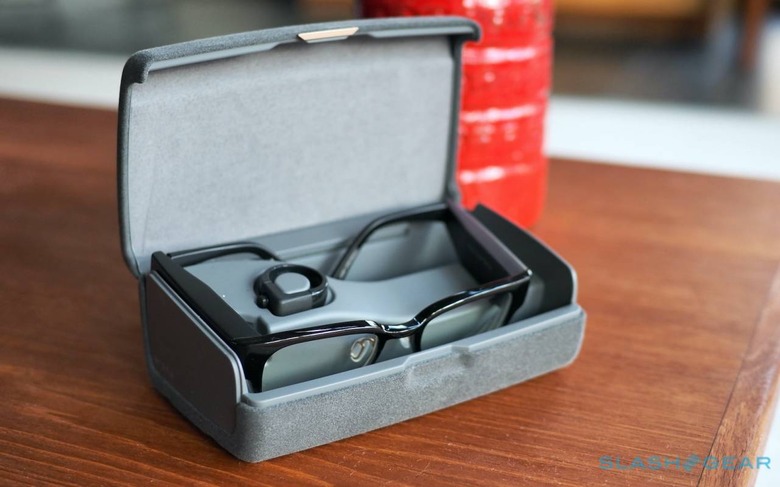
North's commitment is the big picture here
Where North has really impressed has been in just how agile the company is at updating Focals with new functionality. That's not something a lot of companies – even big, established ones – get right.
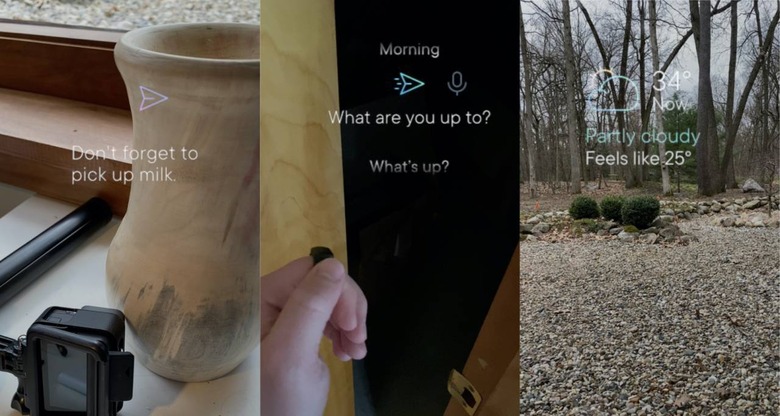
Launching a new product, in a new segment, as a new startup is fraught with issues. On the one hand, big promises get your device attention and help justify the inevitable first-generation price premium. Problem is, they're also difficult to live up to: even if you deliver on 90-percent of what you committed to, it's the absent 10-percent that people will remember.
On the flip side, be conservative with your pitch and you run the risk that people simply won't be impressed at all. Without a reason to buy, sales will struggle and even if you had a compelling roadmap planned out, there's a solid chance you won't be around to deliver it.
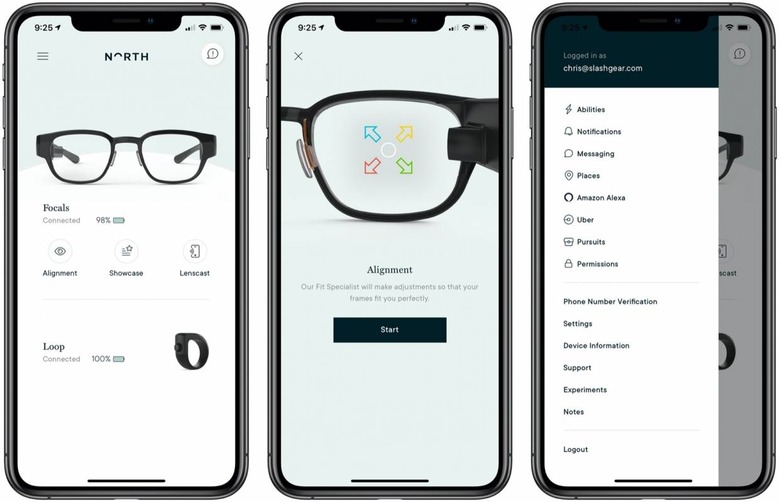
North has managed to just about tread a middle ground between the two, and that takes some doing. Focals launched with a relatively compact set of features, hitting what I'd say were the essentials: messages, turn-by-turn directions, weather reports, calendar reminders, and the ability to summon an Uber to your current location. The smart glasses also interacted with Amazon Alexa. Since then, though, the new abilities and refinements have been more of a flood than a trickle.
At some points, indeed, an update to Focals was dropping pretty much every week. The ability to view presentation slides, get commuting updates with live public transit data, and control different media apps like Spotify remotely, for example. Not all of the new apps were necessarily relevant to every Focals wearer, but it underscored that North wasn't going to be an absent parent when it came to its eyewear.
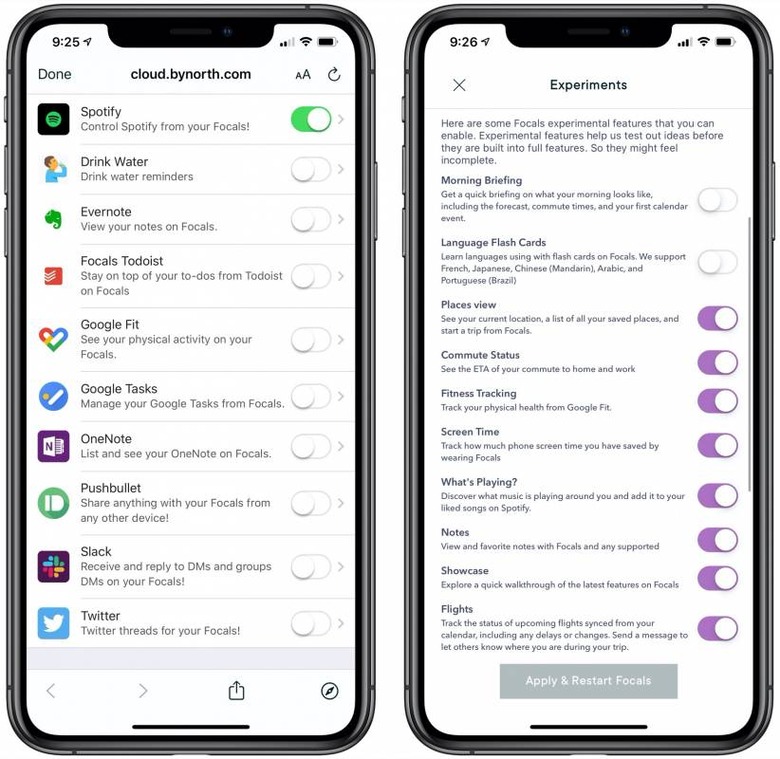
It's that commitment more than anything else which leaves me confident about Focals 2.0. If Focals are the spiritual successor of Google Glass – a head-worn display that isn't really AR – then North's attitude is leap-years ahead of what Google delivered, despite the difference in scale between the two companies. Fresh features were few and far between on Glass, leaving early-adopters wondering whether Google's heart was really in it. That's not a complaint you can reasonably level at North.
North Focals Verdict
You can't buy the first-generation Focals right now, because North is preparing to launch its second-generation Focals 2.0. That's okay, though, because realistically I couldn't really recommend that anyone but the most avid early-adopter and smart glasses advocate jump onboard quite yet. Focals may have come down from their sky-high initial $1,000 price to a more attainable $599 (or $799 with prescription lenses), but the reality is that cost was never the biggest barrier.
What I want from Focals 2.0 is better weight balance. A crisper display that isn't quite so positioning-dependent. And a package that doesn't place so many demands on you overall, whether that be weight on the bridge of your nose, bulky arms in your peripheral vision, or a clunky charging case in your bag.
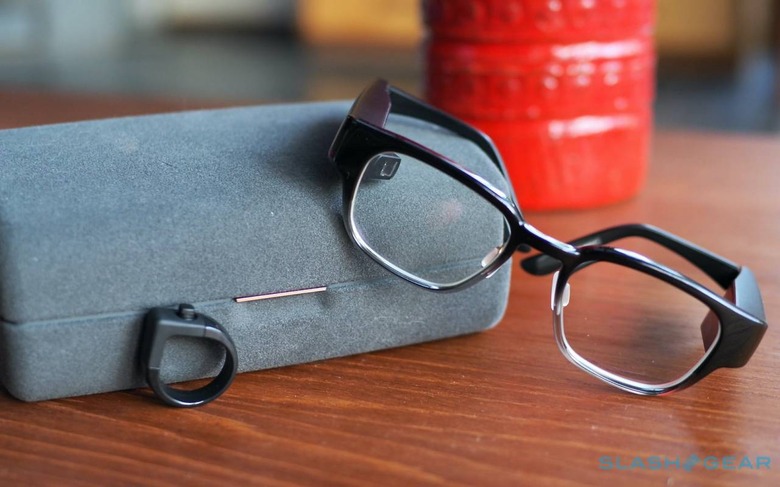
The good news is that, from the teasing North has done already about its second-generation product, it sounds like that wish-list isn't impractical out of the gate. Combine a sleeker, more comfortable set of smart glasses with North's proven commitment to pushing out new and clever apps and services, and you have something which – though probably still not for the mass market yet – is fit for the faces of a much bigger audience of tech enthusiasts.
In that sense, North Focals did just what it was meant to: help crystalize a sense of just what smart glasses are meant to look like and do in our everyday lives. Now, Focals 2.0 just needs to deliver that.
